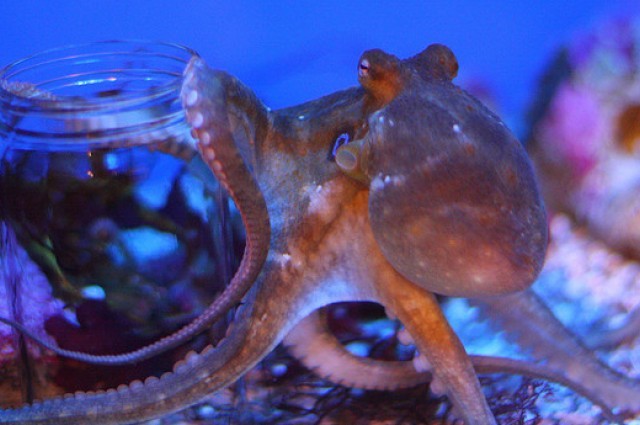A new study verifies that some species of octopus see with their skin. They use the same eye proteins found in eyes, to detect light.
The new octopus research was published in the Journal of Experimental Biology. It is the first study providing solid evidence that octopuses see by using the same light-sensitive proteins (opsins) located in eye lenses.
Also, the new study about octopus vision revealed that the octopus specieses perform this ability in an unexpected way. They require no input from their central nervous system, according to Discovery.
The research shows how fascinating the eight-legged creatures are. In fact, the marine animals are already famous for being some of Earth's most mobile and intelligent beings on Earth.
Octopuses are equipped with an odd combo of huge brains and boneless bodies. They can also see by using two extremely complex eyes, according to Tech Times.
Desmond Ramirez of the University of California said that how octopus see by using their skin is less precise than when the cephalopods use their eyes and brains. The former process detects brightness, not contrast.
The octopuses studied to learn how their skin detects light were the Octopus bimaculoides (two-spot octopus). Before they conducted the experiment, the researchers isolated the octopus' skin and brain, to verify that the brain was not affecting the skin's response.
Ramirez first shone white light on a skin sample of the octopus. This resulted in "chromatophores," pigmented organs in the skin, to expand and change in hue.
Then Ramirez switched off the white light. Amazingly, the chromatophores contracted and the skin returned to its original color.
Ramirez explained that the octopus' skin's reaction implies that light sensors are linked to the chromatophores. This results in the proper response without input from neither the eyes nor the brain.
The university researchers also discovered "rhodopsin," a chemical compound, inside the octopus skin. It probably allows the skin to detect non-blue light wavelengths ranging from violet to orange.
The skin of other animals and humans can also detect ultraviolet light. While it cannot function as camouflage skin as in octopuses, it can prevent skin damage through the tanning process.






















